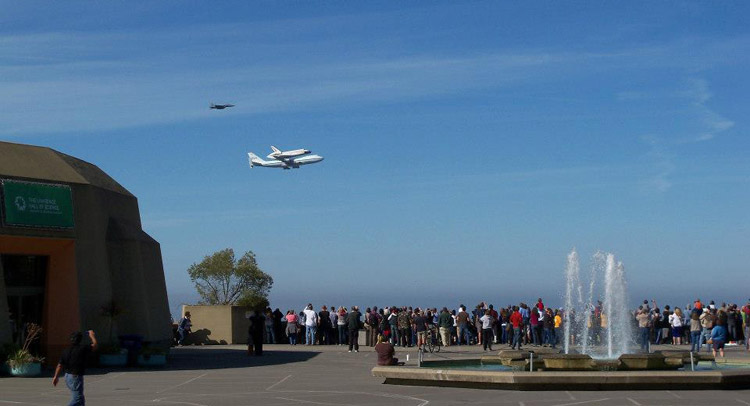
NASA's Space Shuttle Endeavour soared over San Francisco Bay in September, right past the Lawrence Hall of Science where howtosmile.org is based. Piggybacked on a jet, the orbiter made its final awe inspiring flight to its new home at the California Science Center in Los Angeles. (photo by John Erickson, LHS)
A critical concern in Space Shuttle engineering was the exterior tiles' thermal conductivity, or ability to conduct heat. Thousands of tiles attached to the outside surface kept the orbiters from overheating as they rocketed out of and reentered Earth's atmosphere. Howtosmile.org activities like Hot Spoons and Conductors of Heat: Hot Spoons explore thermal conductivity in connection with Space Shuttle tiles. SMILE's Material Properties activity also investigates the strength, flexibility, and transparency of various materials to determine which would work best for different parts of a Space Shuttle.
NASA has distributed Space Shuttle tiles to schools and museums across the U.S. and created Space Shuttle tile curriculum for grades 2-4, 5-8 and 9-12. After 30 years of spaceflight and 500 million miles flown, the spacecraft these tiles protected will be docked in permanent exhibits: Enterprise at the Intrepid Sea, Air & Space Museum in New York City, Atlantis at the Kennedy Space Center Visitor Complex in Florida, and Discovery at the Steven F. Udvar-Hazy Center of the Smithsonian National Air and Space Museum outside Washington, D.C. Millions of visitors to these sites will now get a closeup look at the engineering marvels that changed the history of human space travel.
